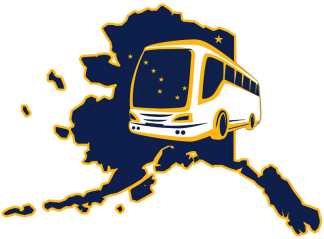The History of the Alaska Railroad
The Alaska Railroad is one of the most famous and important railroads in the U.S. Extending from Seward, along the state’s southern coast, to Fairbanks, deep in the Alaskan Interior, the Alaska Railroad is a vital transportation link, allowing the movement of supplies quickly and easily through the state’s rough terrain. The Alaska Railroad also carries passengers and is both a popular tourist attraction and an important means by which rural Alaskans can travel around the state.
While not the first railroad built in Alaska, the Alaska Railroad is by far the longest and most important, as it connects the state’s two largest cities. This is the history of the Alaska Railroad.
The History of the Alaska Railroad

The Alaska Railroad was conceived as a solution to the transportation woes that had plagued Alaska during the Klondike Gold Rush and the subsequent gold rushes in Nome and Fairbanks. Prior to the Klondike Gold Rush, the Alaskan Interior was unsettled and lacked road links. The sudden swell of migrants into Alaska looking to make their fortunes saw cities such as Fairbanks grow rapidly, showcasing the inadequacy of existing transportation solutions such as boat travel and dog sled.
In 1903, the Alaska Central Railroad began constructing a rail line in Seward, but only managed to build 51 miles of track before going into receivership in 1909. The rail line carried goods, mail, and passengers from Seward to the Turnagain Arm, where they would transfer to boats, dog sleds, or horses to head further north. In 1909, the Alaska Northern Railroad Company purchased the rail line and extended it 21 miles north, but this company would too enter receivership in 1914 due to the railroad’s lack of profitability.
Around this time, the U.S. government had developed an interest in constructing a rail line from Seward to Fairbanks in order to cut transportation times. President William Howard Taft convened a commission in 1912 to survey possible routes. In 1914, the federal government purchased the Alaska Northern Railroad Company and moved its headquarters to what would later become the city of Anchorage, and began plans to extend the rail line north, dubbing it the “Alaska Railroad.”
In 1917, another Alaska railroad, the Tanana Valley Railroad, was teetering on the edge of bankruptcy. The railroad consisted of a 45-mile rail line that served Fairbanks and nearby towns. That year, the federal government purchased the Tanana Valley Railroad and incorporated it into the Alaska Railroad. Because the Tanana Valley Railroad was narrow-gauge, it was converted into a dual gauge rail line to make it compatible with the standard-gauge line in Seward.
Construction of the Alaska Railroad lasted until 1923, slowed by rough terrain and winter weather. That year, the U.S. government completed the Mears Memorial Bridge, which traversed the Tanana River at Nenana and linked the two separate halves of the railroad together. On July 15, 1923, President Warren G. Harding drove the golden spike that completed the railroad. The Alaska Railroad remained under the control of the Department of the Interior until 1967.
The Alaska Railroad began using diesel locomotives in 1944, retiring its last remaining steam locomotive in 1966. The Railroad was heavily damaged by the Good Friday earthquake of 1964, the second-strongest earthquake in recorded history. The earthquake itself tore up tracks near Seward, while flooding and landslides damaged tracks at Turnagain Arm. Restoring the Railroad to normal service took several months.
In 1967, control of the Alaska Railroad passed from the Department of the Interior to the newly-formed Department of Transportation. In 1985, the state of Alaska purchased the Railroad from the federal government for a price of $22.3 million, and would spend the next few years rebuilding the Railroad after years of poor maintenance; total repair costs exceeded $700 million.
Today, the Alaska Railroad remains in operation and forms an important connection between Fairbanks and Anchorage, the two largest cities in Alaska. Unlike other railroads in the U.S., it handles both freight and passengers, and serves as an important means of transporting goods in and out of the remote Alaskan Interior. Many rural Alaskans also rely on the Alaska Railroad to travel to larger cities for food and supplies. The Railroad has also become a popular tourist attraction due to its scenic route and train cars featuring large windows for easy viewing. Many tourists who take cruises from Seward rely on the Alaska Railroad to transport them from Anchorage, where the primary airport in the region is located.
Conclusion

The Alaska Railroad remains both a vital means of transportation in the state of Alaska but an important part of its cultural heritage. For many years, it was the only means of land transportation between Anchorage and Fairbanks, and its role in moving goods and people throughout the state makes it invaluable to Alaska’s economy. As one of the most scenic railways in the world, riding the Alaska Railroad is a truly unique experience.
